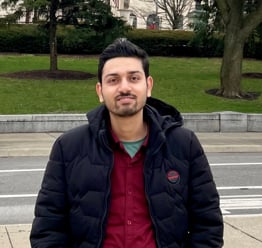By Shubham Sharma Gyawali
The Gen-Z protests of 8–9 September 2025 left a profound scar on Nepal’s built environment. Riots, vandalism, and arson during those two days triggered fires in some of the nation’s most important public buildings, including Singh Durbar, the Parliament, the Supreme Court, the President’s House and other key governmental structures. I offer my deepest condolences to the Gen-Z martyrs and wish a speedy recovery to those injured. As a member of this generation and a structural engineer researching post-fire assessment of concrete structures for the past three years, I feel a personal responsibility to help with the recovery of structures.
While images of flames and smoke captured public attention, the next challenge is deciding whether these damaged structures can be safely repaired or must be rebuilt. Social media has been flooded with speculation, much of it being inaccurate about which structures should be demolished. With Nepal’s resources already stretched, we must avoid unnecessary reconstruction and preserve heritage wherever it is safe to do so. The Nepal Engineers’ Association (NEA) has rightly mobilized teams for rapid post-fire assessments, beginning with visual inspections to identify obvious hazards such as concrete spalling, exposed reinforcement, major cracks, and unstable walls. These are indispensable first steps but cannot be the end of the process. International practice shows that careful scientific evaluation is needed before declaring a structure beyond repair.
Decades of research, including my own experiments, show that concrete’s color offers important clues about the temperatures it has endured. Between 300°C to 600°C, ordinary concrete turns pink or red, from 600-900°C, the cement matrix becomes whitish grey; at 900-1000°C, it turns buff or light brown. These color shifts help engineers estimate peak fire temperatures. At 400°C, calcium hydroxide starts degrading and concrete loses about 30% of its compressive strength. By 900 °C, concrete is no longer structurally sound: if the surface has turned buff, it is effectively beyond repair. Because smoke can stain concrete and mimic these hues, engineers spray acetone on suspect areas to verify that the color change is genuine.
Different structural components must be judged individually. Beams are often exposed to flames on three sides, columns on two, and slabs on only one. For the same surface temperature, reinforcing bars inside a beam may reach higher internal temperatures than those in a slab simply because more sides are heated. This matters because once the steel reinforcement inside the concrete is heated above 400°C, it starts losing its yield and tensile strength. Identifying where reinforcement may have crossed this threshold is essential before deciding whether to repair or replace a structural element.
After a fire, damage is not always obvious. Visual inspections can reveal spalling and cracks but rarely tell the full story. Around the world, engineers complement visual inspection with non-destructive tests (NDTs) to assess concrete without causing further harm. A widely used method is Rebound Hammer, which measures the surface hardness through the rebound of a spring-loaded hammer. Lower rebound numbers indicate higher damage but can’t be directly correlated with compressive strength. Multiple readings across beams, columns, and slabs should be compared between fire-affected and unaffected regions. Damaged areas, which show lower rebound numbers, can then be marked for further evaluation. These locations should be cross verified with Ultrasonic pulse Velocity (UPV) method, which provides a reliable indicator of relative damage. However, it is poor practice to estimate compressive strength directly from rebound or UPV readings. These tests are best used to identify locations requiring deeper investigation. Once the damaged regions are identified, concrete cores can be extracted from both affected and unaffected areas to accurately determine any loss of strength. Before coring, Ground Penetrating Radar (GPR) is recommended to locate embedded reinforcements, and avoid damaging sound steel. Where visual signs of cover spalling expose reinforcement, sections of rebar may be cut and tested to determine the post-fire strength and confirm whether the bars remain serviceable.
Assessing fire-damaged concrete is detailed work, but it is critical for identifying which parts of a building truly need repair or replacement. When these methods are combined, engineers can create a damage map of the structure. Rather than issuing a blanket recommendation to demolish or rebuild, they can pinpoint which beams, columns, or slabs remain serviceable and which must be replaced. Rebuilding entire structure or even replacing specific portions may be capital intensive as compared to repairment strategies. Implementing repair strategies wherever possible not only saves money but also preserves the building’s heritage. For example, if a 10-foot-long beam shows exposed reinforcement over only a 2-foot section, replacing the entire beam is unnecessary. Engineers can instead repair the affected portion. Common techniques include overlaying fresh concrete on spalled areas and replacing rebars that experienced temperatures above 400 °C, splicing them to the existing sound steel.
Having spent years researching the post-fire assessment of concrete structures, and as a member of the Gen-Z generation myself, I feel both the grief of our recent losses and the urgency of action. I stand ready to contribute my expertise to help my country develop the tools and practices needed for evidence-based decisions so that we neither abandon salvageable buildings nor occupy unsafe ones. With coordinated action from government agencies, professional societies like the NEA, and academic researchers, Nepal can modernize its post-fire engineering practices and honor the memory of those who sacrificed their lives by ensuring our built environment emerges stronger and safer.
Shubham Sharma Gyawali is a Civil Engineer and is currently pursuing a Ph.D. at The University of Alabama.
